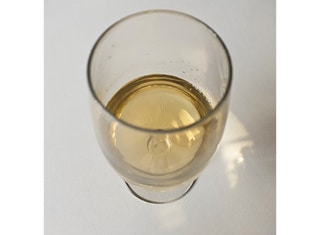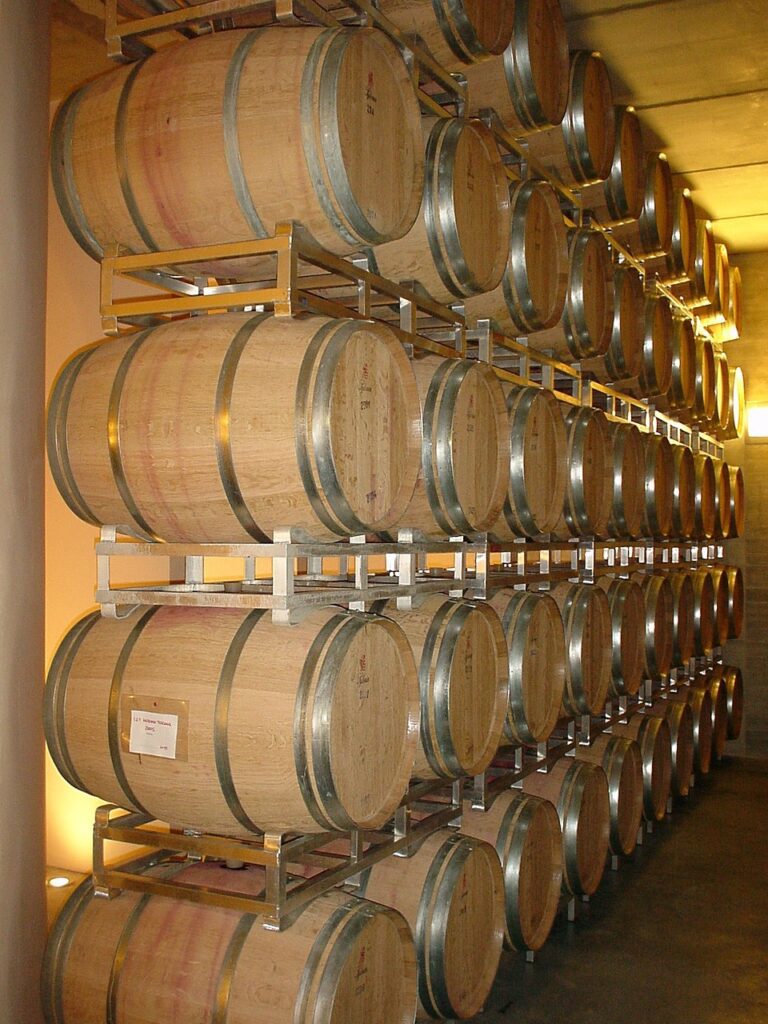
Phenols can cause the browning of white wines.
Phenolic compounds occur widely in nature. As result of the colour and astringency of red wines everybody is aware of the role of phenols. It can however also play an important role in the colour and quality of white wines.
Phenolic compounds are characterised by a six carbon atom benzene ring. Its concentration in white juice and wine is influenced by different factors ranging from the vineyard into the cellar. Oak wood and grapes are the two sources of it in white wines and the phenols originating from the grapes can be divided in flavonoids and non-flavonoids. The latter occurs mainly in the berry pulp, while the first mentioned occurs in the skin, seeds and stems. If the sources are borne in mind it is obvious that its concentrations are influenced by viticultural and winemaking practices. Phenolic compounds develop and change over time and are also influenced by pH, aging conditions, oxygen and temperature.
Hydroxycinnamates (non-flavonoids) and flavan-3-ol (flavonoid) contribute the most during white wine making. The enzymatic oxidation of both can occur in fresh grape juice or chemical oxidation can occur over time. In the oxidised form it can cause sensory faults by the binding of thiol compounds or browning of the colour. Enzymatic oxidation can be caused rapidly by the grape enzyme, tyrosinase, but this can be controlled by sulphur dioxide and settling practices. Enzymatic oxidation can however be negative if it is caused by the laccase enzyme, which occurs in Botrytis infected grapes. This enzyme is more resistant against sulphur dioxide and better adjusted to the pH of grape juice.
Flavan-3-ol (flavonoid) consists mainly of (+)-catechin and (-)-epicatechin, which are important in white wines, because it is very reactive towards oxygen. The concentration in grape juice is mainly determined by vineyard practices like the harvesting method, press cycles and press pressure, because it occurs mainly in the skin and seed. In its oxidised form the flavan-3-ols are very reactive towards oxygen and it can bind the thiols, which are especially formed by the yeast in thiol cultivars, like Sauvignon blanc, irreversibly. Such bound thiols are consequently not more available as aromas. In the absence of glutathione the (+)-catechin and (-)-epicatechin will be bound and the aromatic thiols will still be available.
Hydroxicinnamic acid is not only the most important form of non-flavonoids in grapes, but also comprises 80% of the phenolic compounds in white wines, without skin contact. It occurs in the berry pulp as esters of tartaric acid and is important in white wines seeing that it is the first to be oxidised. Hydroxicinnamates play a key role in the browning of juice seeing that enzymes are released from the juice, which will lead to its browning. In the presence of glutathione the oxidised hydroxicinnamate will form a colourless grape reaction product and decrease the browning. Sulphur dioxide will limit the enzymatic oxidation, but chemical oxidation will over time not be prohibited if hydroxicinnamates are still available. In oxidised form it can bind thiols as flavan-3-ols, but it is not very effective in it. In combination with sulphur dioxide the presence of caffeic acid can however slow down the removal of the volatile aroma compounds.
The most important aspects, which can be summarised from the above mentioned are the following:
- A combination of fining agents is better to remove a broad spectrum of oxidisable or oxidised phenols.
- Grape juice or wine will be oxidised if oxidisable compounds occur in it, if it is not protected against it.
- Sulphur dioxide additions are not sufficient to prevent the oxidation of key phenolic compounds.
- The volatile compounds of certain cultivars like Sauvignon blanc, which require protection, must be understood.
- The influence of different press programs on the phenolic concentrations of juice must be understood.
- Finings during fermentation can be utilised beneficially to remove surplus phenols.
- Although the enzymatic oxidation of grape juice occurs rapidly, the chemical oxidation can occur at a much slower rate over time.
(Seabrook, 2019.)
Reference
Seabrook, A., 2019. White wine phenolics: What compounds are there and which ones cause problems? Australian and New Zealand Grapegrower and Winemaker, January 2019: 53 – 54.
– For more information, contact Charl Theron at vinofino@mweb.co.za.













